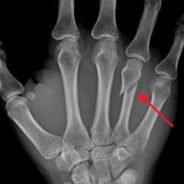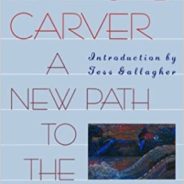The Wounded Storyteller (Part Three of Three): The Quest Narrative
I’m returning now (finally) to The Wounded Storyteller, and to the third and final kind of narrative Arthur Frank suggests a person can make in the wake of illness and suffering—the quest narrative. He defines this narrative thus: Quest stories meet suffering head on; they accept illness and seek to use it. He outlines a structure for this quest story, borrowing from Joseph Campbell’s Hero With a Thousand Faces. He describes three key stages of a quest, which I’m including here with a few comments. (These stages may already be quite familiar to many of you.): Departure: This begins with some kind of call. In a mythic hero or heroine story this call might be that moment when something or someone entirely new appears and sets an adventure in motion—say, for instance, a stranger appears with a rumor about a holy grail that needs to be located. In an illness story the call can be a symptom—a call from the body itself. Or it can be that moment when a doctor gives a name to the symptom. Included in this first stage is the typical response to this call—for most heroes and heroines as well as ordinary folks—“the refusal of the call.” No, this can’t be. No, I must have heard wrong. No. “Eventually,” Frank writes, “the call can no longer be refused—symptoms are unmistakable, diagnoses are made—and what Campbell calls ‘the first threshold’ is crossed.” Crossing this first threshold ushers in the second stage of the quest. Initiation: This stage involves what’s called “a road of trials”. This is the long middle part of the quest story. The part where a person may begin to reckon with the fact that this thing—this illness or loss or trouble or adventure—or all of these combined—this thing is going to be something of a big deal. This is not nothing. Something is happening. Often a significant part of this stage can be frightening and uncomfortable. The hero or heroine is tested and tempted. Like Odysseus on his ship steering between Scylla and Charbydis. A key part of this stage is a sense that at some point the hero or heroine is changed. Transformed. Something happens—not just outside the hero or heroine but inside. This is perhaps the key place where this narrative differs, for instance from the restitution narrative. X is no longer quite X. X is becoming Y. This stage of the quest story ends with what Campbell calls a boon. The teller of the story has received something—a blessing of some sort—or treasure—or piece of wisdom. And now is ready for the third stage. Return: Here the teller returns from an experience—an adventure—a road of trials—a journey—somehow marked. (Like Odysseus returning to Penelope. Or Frodo returning to the shire.) Here, Frank makes an interesting distinction. In one kind of hero story the hero returns as one who has conquered. And this conquering hero may, on return, boast of his accomplishments. In another kind of story—what he calls a postmodern kind of hero story—the hero returns not so much boastful as somewhat humbled. Frank writes: The paradigmatic [postmodern] hero is not some Hercules wrestling and slugging his way through opponents, but the Bodhisattva, the compassionate being who vows to return to earth to share her enlightenment with others. Compassion as...
read more

